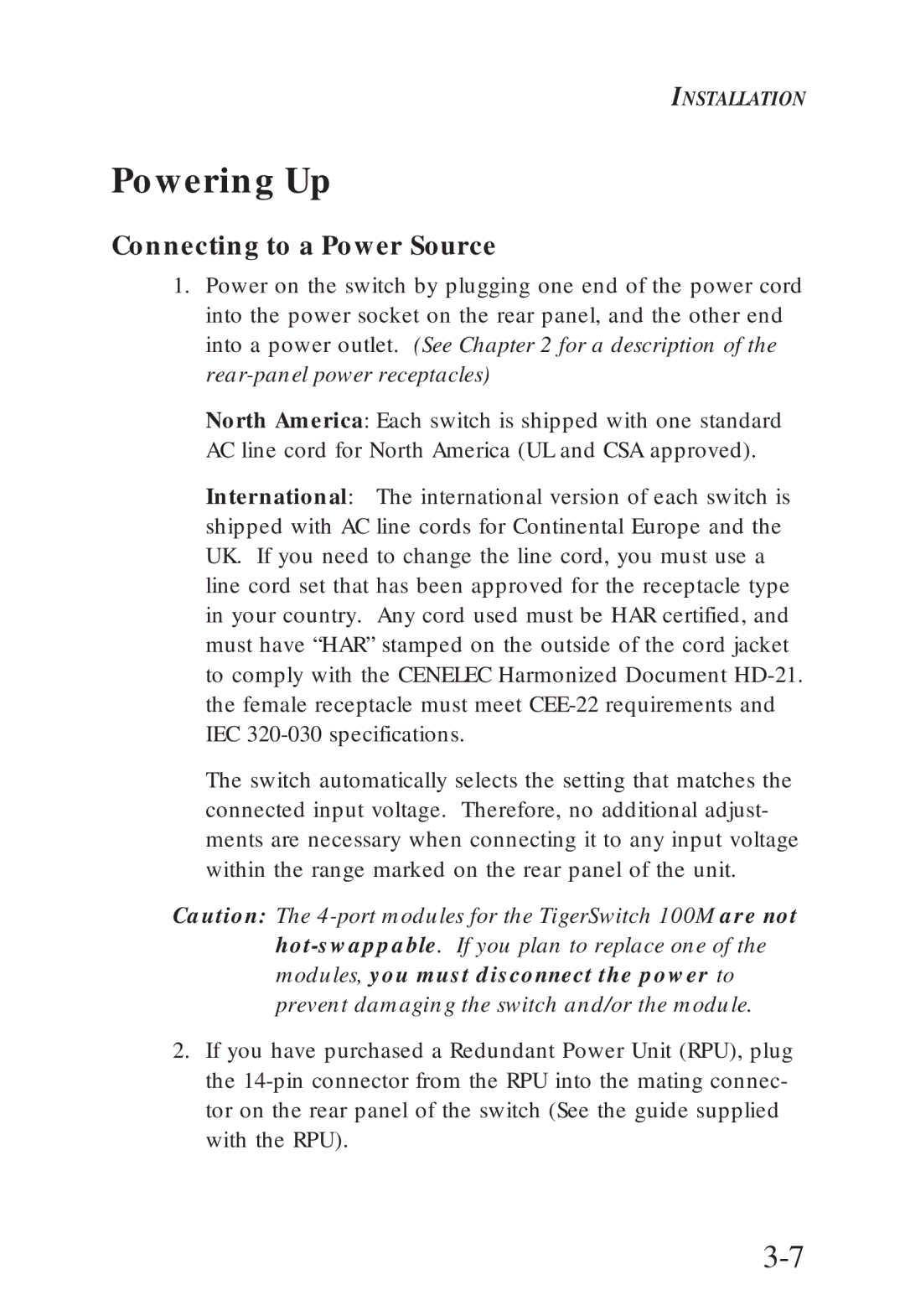INSTALLATION
Powering Up
Connecting to a Power Source
1.Power on the switch by plugging one end of the power cord into the power socket on the rear panel, and the other end into a power outlet. (See Chapter 2 for a description of the
North America: Each switch is shipped with one standard AC line cord for North America (UL and CSA approved).
International: The international version of each switch is shipped with AC line cords for Continental Europe and the UK. If you need to change the line cord, you must use a line cord set that has been approved for the receptacle type in your country. Any cord used must be HAR certified, and must have “HAR” stamped on the outside of the cord jacket to comply with the CENELEC Harmonized Document
The switch automatically selects the setting that matches the connected input voltage. Therefore, no additional adjust- ments are necessary when connecting it to any input voltage within the range marked on the rear panel of the unit.
Caution: The
2.If you have purchased a Redundant Power Unit (RPU), plug the
